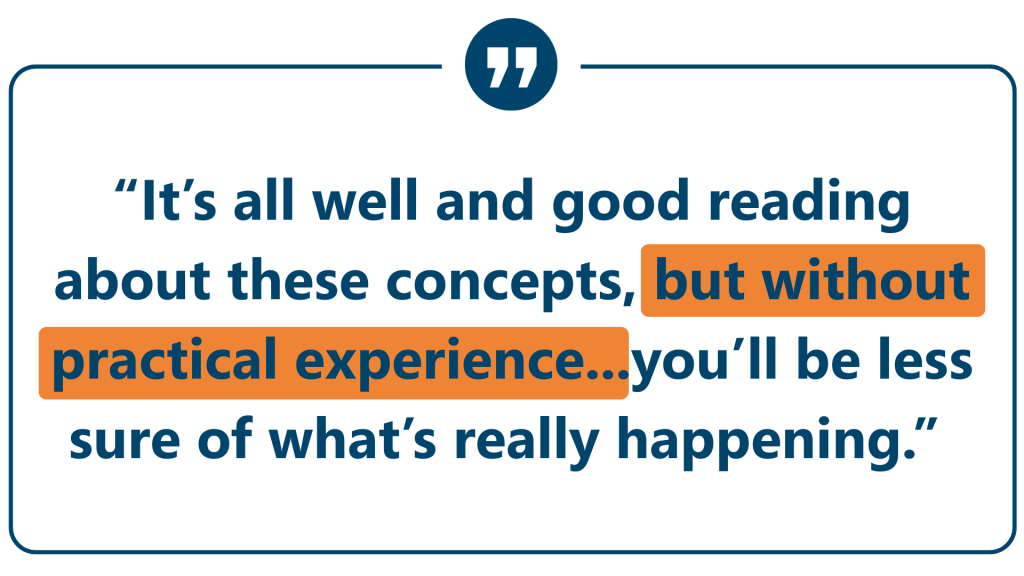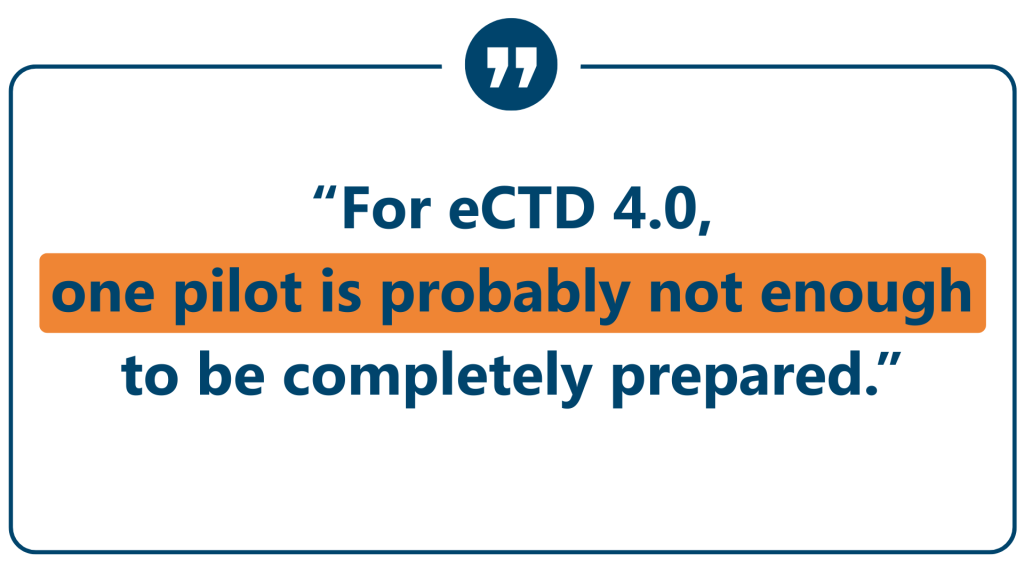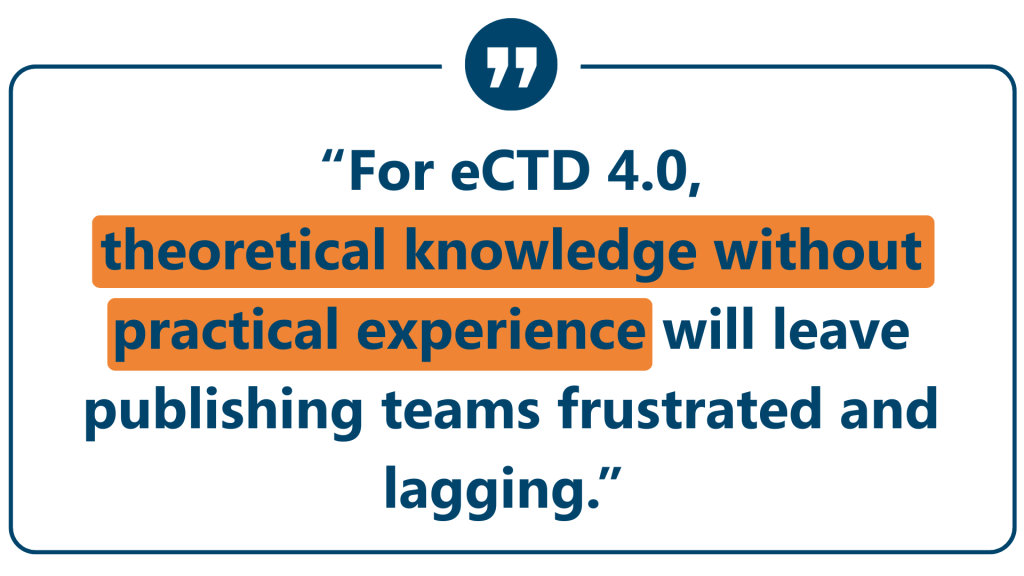The transition to eCTD 4.0 is underway, and as many publishers have already discovered, it’s not just a minor update.
During a recent customer session, I shared what’s really changing, what early pilots have revealed, and how teams can prepare effectively.
Here’s a quick look at the highlights from the session.
It’s Not “eCTD 3.2 with a Few Tweaks”
eCTD 4.0 represents a major shift in how submissions are structured and validated.
Instead of relying on familiar folder hierarchies, the new standard focuses on metadata and context of use, which means the technical logic behind submissions has changed.
Folder names and granularity are simplified, but that simplicity comes with a catch: publishers must now understand the XML structure in more detail than before.

Keywords Are the New Backbone
In eCTD 3.2, folder names largely defined where documents belonged.
In eCTD 4.0, keywords do the heavy lifting.
Each document must have specific keywords – like language, document type, or study ID – that tell the agency exactly what the file is.
These keywords are agency-defined and linked to strict code systems. If even one code system or value is off, validation errors follow.
We illustrated this with examples from real pilots, where small mistakes (like a wrong keyword code or missing parent element) triggered long lists of validation errors.
What’s the key takeaway? Understanding what each field means, and why it’s required, is key to avoiding rejection.
Granularity Is Changing
Under eCTD 4.0, many of the subfolders familiar to publishers disappear.
Teams can still create subfolders for internal organization, but they’ll need to decide:
- Who defines these subfolders?
- How will structure and naming be governed?
- How will consistency be maintained across submissions?
Planning this early will prevent confusion later, especially when multiple publishers are involved.
Controlled Keyword Management Matters
One recurring theme from the pilots was the need for controlled management of sender-defined keywords.
Without a master table or shared reference list, small naming differences (like variations in a drug substance name) can lead to duplicates, branching folders, and inconsistencies over time.
The goal should be to create and reuse standard definitions centrally, rather than letting every publisher define their own.
Why You Need to Prepare Now
The agencies are moving ahead, and timelines are becoming clearer:
- EMA has indicated voluntary submissions could start as early as the end of this year, with mandatory use for CAPs expected in 2027.
- FDA is accepting voluntary submissions, and will require eCTD 4.0 in 2029.
- Japan’s PMDA is already preparing for its April 2026 deadline.
- Other regions, such as Health Canada and Swissmedic, are expected to follow with pilots in 2027–2029.
The Takeaway?
Even if your first eCTD 4.0 submission is months away, the learning curve means now is the time to get hands-on.
Check out our eCTD 4.0 timeline to stay up to date on upcoming milestones: Download the Timeline
Theory Alone Won’t Be Enough

Publishing under the new standard requires practice, understanding not just how to do something in the tool, but why it works that way.
Teams that have already participated in pilots are learning faster and providing feedback that helps refine both tools and processes.
Every practical exercise builds the confidence needed to avoid errors and reduce delays when real submissions begin.
How to Get Ready
Here’s what we recommended to all publishing teams:
- Read the documentation. It may not be exciting, but it’s essential, especially the new XML structure and keyword tables.
- Understand the control keywords. Keep agency-provided tables close at hand to know which fields are mandatory.
- Define your governance. Decide how sender-defined keywords and folders will be managed.
- Pilot early and often. Work with your vendor to simulate submissions and identify pain points.
- Collaborate with your tool provider. Share feedback to help improve usability and reduce transition risks.
Practical Support From Ennov
To make preparation easier, we offer dedicated environments and training for customers who want hands-on practice:
- Prepare-to-Publish environments with the latest eCTD 4.0 builds and user guides.
- Metadata and process optimization workshops.
- Submission support and troubleshooting sessions guided by subject-matter experts.
Every organization is different, so these services can be tailored to your team’s experience level and timing. Get in touch with us today for eCTD 4.0 support.
Final Thought

That statement perfectly sums up the session.
The move to eCTD 4.0 isn’t about replacing one format with another, it’s about reshaping how publishers think, structure, validate their work and managing the change.
The more hands-on experience you gain now, the smoother your first real submission will be.


